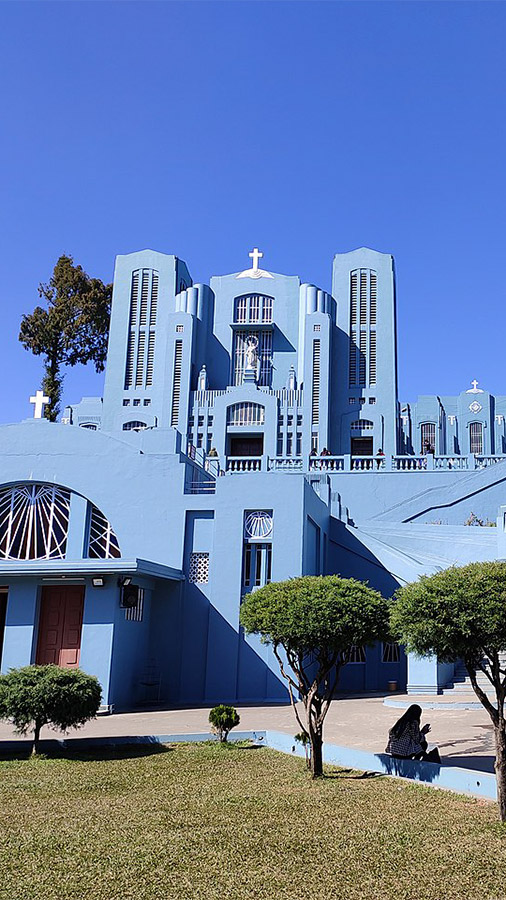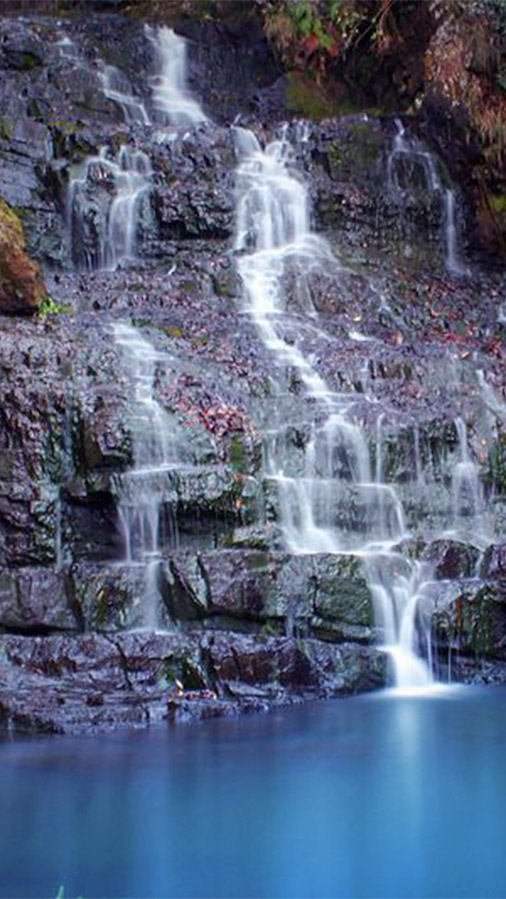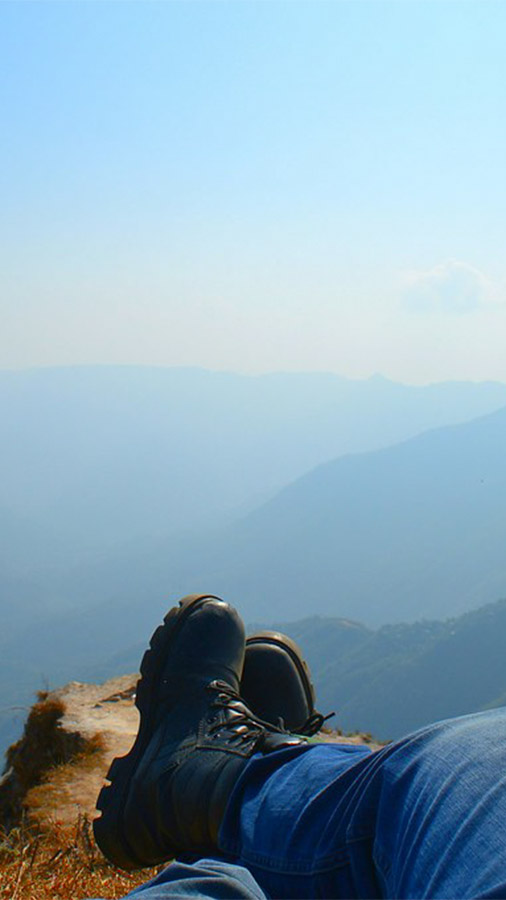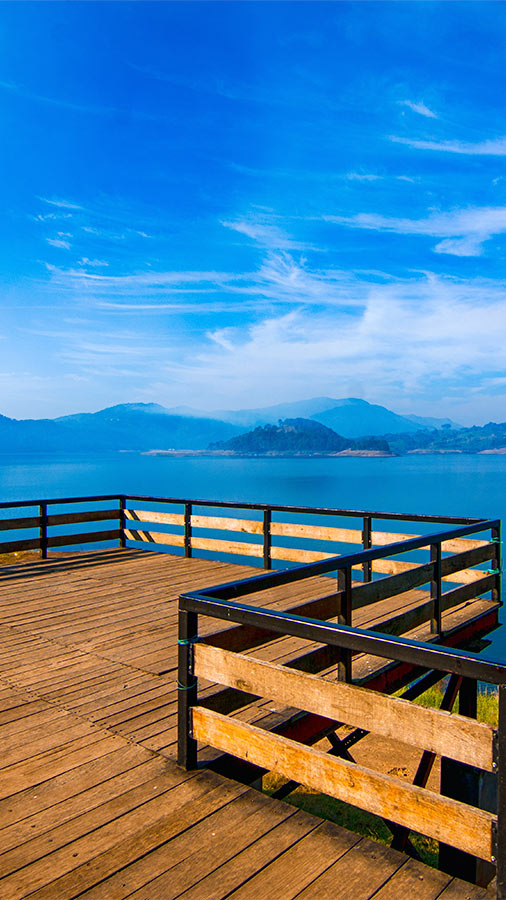Shillong Travel Guide: Attractions & How to Plan Your Trip
Why Shillong?
Shillong, famously known as the "Scotland of the East", is one of the most picturesque hill stations in Northeast India. Nestled amidst the lush green Khasi hills, the city offers curvy, well-paved roads lined with pine forests, giving it a unique charm reminiscent of European hill towns. With British-era architecture, colonial-era churches, and bustling local markets, Shillong effortlessly combines natural beauty with urban heritage, making it a captivating destination for travelers of all kinds.
Situated just about 100 kilometers from Guwahati, Shillong is one of the most easily accessible hill stations in Northeast India, making it perfect for both quick weekend getaways and longer explorations of Meghalaya. The frequent rains, drifting clouds, and mist-kissed landscapes add a dreamy atmosphere to the city, enhancing its romantic and scenic appeal. Visitors are advised to carry umbrellas and raincoats, especially during the monsoon months, as sudden showers are part of Shillong’s everyday rhythm.
What truly sets Shillong apart is the seamless blend of urban vibrancy and natural calm — where you can spend the morning exploring lively markets and colonial-era churches, and by afternoon, retreat to tranquil viewpoints overlooking endless green valleys. Its accessibility, pleasant weather, and diverse experiences make Shillong not just a stopover, but a destination worth cherishing on its own.
Sightseeing in Shillong
Shillong offers a diverse range of attractions that blend natural beauty, culture, and history. From cascading waterfalls and serene lakes to lush parks and panoramic viewpoints, the city and its surroundings offer something for every traveler. The landscape changes with the seasons — misty and lush during the monsoon, blooming with flowers post-rain, and clear and vibrant during winter — ensuring a memorable experience year-round.
- Shillong Peak: The highest point in the city, providing sweeping views of Shillong and surrounding hills. Perfect for sunrise or sunset photography.
- Elephant Falls: A three-tiered waterfall, especially spectacular post-monsoon. Bring umbrellas or raincoats as the mist can be heavy.
- Umiam Lake: A scenic reservoir north of Shillong ideal for boating, picnics, and water sports, surrounded by rolling hills.
- Ward’s Lake: A beautifully landscaped lake in the heart of Shillong, featuring walking paths, garden spaces, and a serene environment.
- Lady Hydari Park: A botanical garden showcasing indigenous and exotic flora, ideal for leisurely walks and family visits.
- Don Bosco Museum: Showcasing the culture of Northeast India, including Khasi, Jaintia, and Garo tribes, with artifacts, crafts, and interactive exhibits.
- Laitlum Canyons: Dramatic cliffs and valleys offering panoramic views and a peaceful retreat. A short walk provides spectacular photo opportunities.
- Mawphlang Sacred Forest: A serene natural reserve near Shillong, ideal for walking through lush greenery and learning about local flora and traditions.
- Local Markets (Police Bazaar & Bara Bazaar): Bustling hubs for shopping, sampling local cuisine, and experiencing the city’s vibrant culture.
- Cathedral of Mary Help of Christians: A historical church showcasing colonial-era architecture and tranquility in the heart of the city.
Beyond the city, Meghalaya offers destinations like Cherrapunjee (Sohra) with its waterfalls and caves, Mawlynnong — the cleanest village in Asia, Dawki with its crystal-clear river, and Krang Suri, a stunning natural pool with turquoise waters. Exploring these places alongside Shillong allows visitors to experience the full charm of the state, from natural wonders to cultural heritage.
How to Reach Shillong
By Road
Shillong is approximately 100 km from Guwahati. The drive through Ri-Bhoi district is scenic, with stops at Umiam Lake and other viewpoints along the way. Roads are well-maintained, but during the monsoon, travelers are advised to drive carefully and carry umbrellas or raincoats.
By Air
Shillong Airport (SHL) is the nearest, but with limited flights. Most visitors fly into Guwahati Airport (GAU) and then drive 3–4 hours to Shillong, enjoying scenic views along the route.
By Train
The closest railway station is in Guwahati. From there, taxis or buses connect to Shillong via the picturesque highway passing through hills and small towns.
Permits?
Shillong, being in Meghalaya, does not require an Inner Line Permit (ILP) or Protected Area Permit (PAP) for Indian or foreign nationals. Travelers can freely explore Shillong and surrounding attractions without any permit formalities.
Weather in Shillong
Shillong, often called the “Scotland of the East”, enjoys a pleasant subtropical highland climate throughout the year. Its weather is characterized by mild summers, cool winters, and heavy monsoon rains that blanket the surrounding hills in lush greenery. The city’s altitude (~1,500 m) keeps temperatures moderate even during summer.
| Season | Months | Temperature Range | Highlights |
|---|---|---|---|
| Winter | November – February | 4°C – 15°C | Chilly mornings and crisp air with clear blue skies. Ideal for city walks, sightseeing, and panoramic views from Shillong Peak. Occasional fog adds to the charm. |
| Summer | March – May | 15°C – 24°C | Comfortably cool and breezy. Perfect for outdoor exploration, waterfalls, and treks. The blooming season of orchids and wildflowers across the hills. |
| Monsoon | June – October | 12°C – 20°C | Heavy rainfall, with annual precipitation exceeding 2,500 mm. Waterfalls and lakes swell to their fullest, making it a paradise for nature lovers, though travel can be slow due to mist and showers. |
Shillong does not experience snowfall, but dense morning fog and drizzles are frequent during monsoon and winter. Carry light woollens in winter and quick-dry gear during the rainy months.
Best Time to Visit Shillong
The ideal time to visit Shillong depends on the experience you want:
- October–April: Pleasant weather, perfect for sightseeing, trekking, and exploring nearby destinations.
- June–September: Monsoon season, with lush greenery and roaring waterfalls. Carry raincoats and umbrellas to enjoy the season safely.
Sample Itinerary
Day 1: Guwahati → (Umiam Lake, en-route) → Shillong → Local sightseeing (Ward’s Lake, Police Bazaar, Lady Hydari Park)
Day 2: Shillong → Elephant Falls → Shillong Peak → Don Bosco Museum → Return to Shillong
Day 3: Shillong → Laitlum Canyons → Mawphlang Sacred Forest → Return to Shillong
Day 4: Optional excursion to Cherrapunjee, or Mawlynnong & Dawki → Return to Shillong / Transfer to Cherrapunji
Day 4: Continue sightseeing in Cherrapunji / Shillong → Departure to Guwahati
For more detailed itineraries and Shillong tour packages, check out our Shillong Tour Packages. Customizing the pace and including nearby destinations can make your visit comfortable and enriching.
Travel Tips
- Carry umbrellas or raincoats year-round, especially during monsoon months.
- Wear layered clothing; evenings can be chilly even in summer.
- Use sturdy footwear for trekking to waterfalls, living root bridges, and hills.
- Keep local cash handy; ATMs are limited in remote areas.
- Respect Khasi, Jaintia, and Garo customs and traditions.
- Reliable mobile connectivity is mainly via Airtel and BSNL; other networks may have limited coverage.
- Plan your visit between October and April for optimal weather, unless monsoon waterfalls are your priority.

Cathedral of Mary Help of Christians

Elephant Falls

Laitlum Canyons

Umiam Lake
Frequently Asked Questions on Shillong (FAQs)
Which is the Best Time to Visit Shillong?
Shillong is charming throughout the year, but the best time to visit is during the monsoon and post-monsoon months (June to October) when the waterfalls and lakes are at their fullest. Spring (March–April) is also ideal for pleasant weather, while November brings the famous Cherry Blossom Festival.
What is Shillong famous for?
Shillong is famous for its year-round rainfall, pine-clad hills, colonial-era architecture, and vibrant Khasi culture. Known as the “Scotland of the East,” the city offers a unique blend of natural beauty and urban charm, with highlights like Umiam Lake, Ward’s Lake, and buzzing Police Bazaar.
How far is Shillong from Guwahati?
Shillong is about 100 kilometers from Guwahati, connected by a scenic hill road. The drive usually takes 2.5 to 3 hours, though it may take longer during monsoon due to fog and rain.
Is there snowfall in Shillong?
No, Shillong does not experience snowfall. Despite being a hill station, the climate is mild, with winter temperatures rarely dropping below 2–3°C. For snow, visitors need to travel to higher-altitude destinations like Tawang or Sikkim.
Is permit required to visit Shillong?
No special permit is required to visit Shillong or Meghalaya for Indian tourists. However, foreign nationals must register with the local police upon arrival, as per government regulations.
When does Cherry Blossoms bloom in Shillong?
herry blossoms in Shillong usually bloom from late October through mid-November. The annual Shillong Cherry Blossom Festival is celebrated around this time, attracting travelers from across the world.
On which days is Shillong Peak closed?
Shillong Peak is a military-controlled area and remains closed to visitors on Wednesday. On other days, visitors must carry a valid ID proof to gain entry.
On which days is Lady Hydari Park closed?
Lady Hydari Park remains closed every Monday. On other days, it is open from morning until evening, making it a popular spot for families and children.
On which days is Don Bosco Museum closed?
The Don Bosco Museum in Shillong remains closed on Sundays. On other days, it operates from morning till late afternoon, showcasing Northeast India’s rich cultural heritage.
Why is Shillong called the "Rock Capital of India"?
Shillong has a vibrant music culture, with a history of producing legendary bands and hosting popular music festivals. The passion for rock music among locals earned the city its title as the "Rock Capital of India".
Which local market is best for experiencing Khasi culture?
The traditional Lewduh (Bara Bazar) is one of the oldest and largest markets in Shillong. It is run mainly by women vendors and offers everything from fresh produce and handicrafts to local Khasi delicacies.
Are there any museums worth visiting in Shillong?
Yes, the Don Bosco Museum is a must-visit. It showcases the rich cultural heritage of all the Northeastern states through galleries, artifacts, and a skywalk offering panoramic views of the city.
Is Shillong Golf Course really special?
Absolutely. Known as the "Gleneagles of the East", Shillong Golf Course is one of the oldest and largest natural golf courses in Asia, set amidst rolling green hills and pine groves.
Which days should I avoid visiting Lady Hydari Park?
Lady Hydari Park, famous for its manicured gardens and mini-zoo, remains closed on Monday.
What’s unique about Elephant Falls?
Elephant Falls, located on the outskirts of Shillong, is a three-step waterfall that becomes especially magnificent during the monsoon. Its Khasi name, "Ka Kshaid Lai Pateng Khohsiew", translates to "Three Step Waterfall".
Which months are best for Cherry Blossoms in Shillong?
The Cherry Blossom season usually peaks in November, when the city turns pink and hosts the annual Shillong Cherry Blossom Festival.
Which is the highest point in Shillong?
The Shillong Peak is the city’s highest point, located at about 1,965 meters above sea level. It offers panoramic views of the city, surrounding hills, and on clear days, even the plains of Bangladesh.
Is photography allowed inside the Cathedral of Mary Help of Christians?
Photography is generally not allowed inside the Cathedral, though you can take pictures of the exterior and its beautiful surroundings.
Which museum in Shillong is run by the Indian Air Force?
The Air Force Museum in Upper Shillong is maintained by the Indian Air Force. It displays aircraft models, uniforms, badges, and other defense artifacts.
What is unique about Umiam Lake?
Umiam Lake, also known as Barapani, is a large man-made reservoir. Apart from being a major source of water, it is also popular for water sports like kayaking, boating, and water cycling.
Are there any caves near Shillong?
Yes, caves like Mawjymbuin Cave near Mawsynram and Arwah Cave near Cherrapunji are easily accessible from Shillong and are famous for their limestone formations.
Which day is the Don Bosco Museum closed?
The Don Bosco Museum remains closed on Sundays and public holidays, so plan your visit accordingly.
Which local festival is widely celebrated in Shillong?
The Shad Suk Mynsiem festival, meaning “Dance of the Joyful Heart”, is a traditional Khasi festival held in spring to celebrate fertility and gratitude to nature.
How far is Mawphlang Sacred Forest from Shillong?
Mawphlang Sacred Forest is about 25 kilometers from Shillong. It is a protected grove, rich in biodiversity and local Khasi spiritual traditions.
Is there any famous viewpoint apart from Shillong Peak?
Yes, the Laitkor viewpoint inside the Eastern Air Command premises also offers scenic views, but it requires special permission for entry.
Which river flows through Shillong?
The Umkhrah River flows through Shillong and is a tributary of the Brahmaputra. It passes through lush valleys and is an important water source for the city.
What is the significance of Elephant Falls?
Elephant Falls is named after an elephant-shaped rock formation that used to stand near the falls. The waterfall has three cascading tiers and is a popular spot for photography and picnics.
Which Shillong park is famous for orchids?
The Lady Hydari Park is known for its beautiful orchid collection, well-maintained gardens, and walking paths shaded by tall trees.
What is the distance between Shillong and Cherrapunji?
Cherrapunji is about 55 kilometers from Shillong, roughly a 2-hour drive through winding hill roads surrounded by lush greenery.
Which church in Shillong is the oldest?
The Cathedral of Mary Help of Christians is the oldest church in Shillong, built during the British colonial era. It is known for its Gothic architecture and peaceful ambiance.
Which viewpoint is ideal for sunrise in Shillong?
The Laitumkhrah Viewpoint and Shillong Peak are ideal for sunrise views, offering panoramic vistas of the valleys and hills bathed in early morning light.
What is the cleanest village near Shillong?
Mawlynnong, located about 90 kilometers from Shillong, is renowned as Asia’s cleanest village. It is famous for its well-maintained streets, bamboo bridges, and eco-friendly lifestyle.
